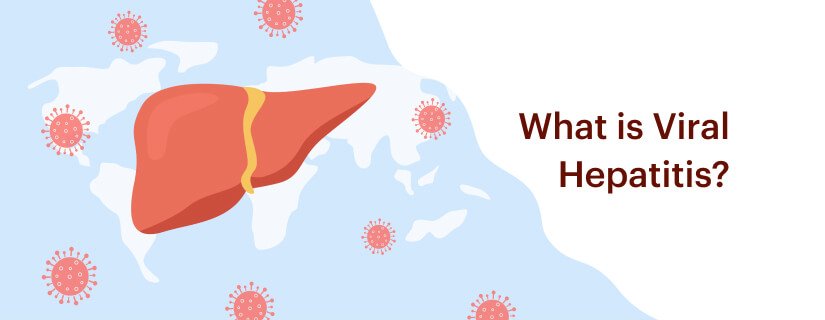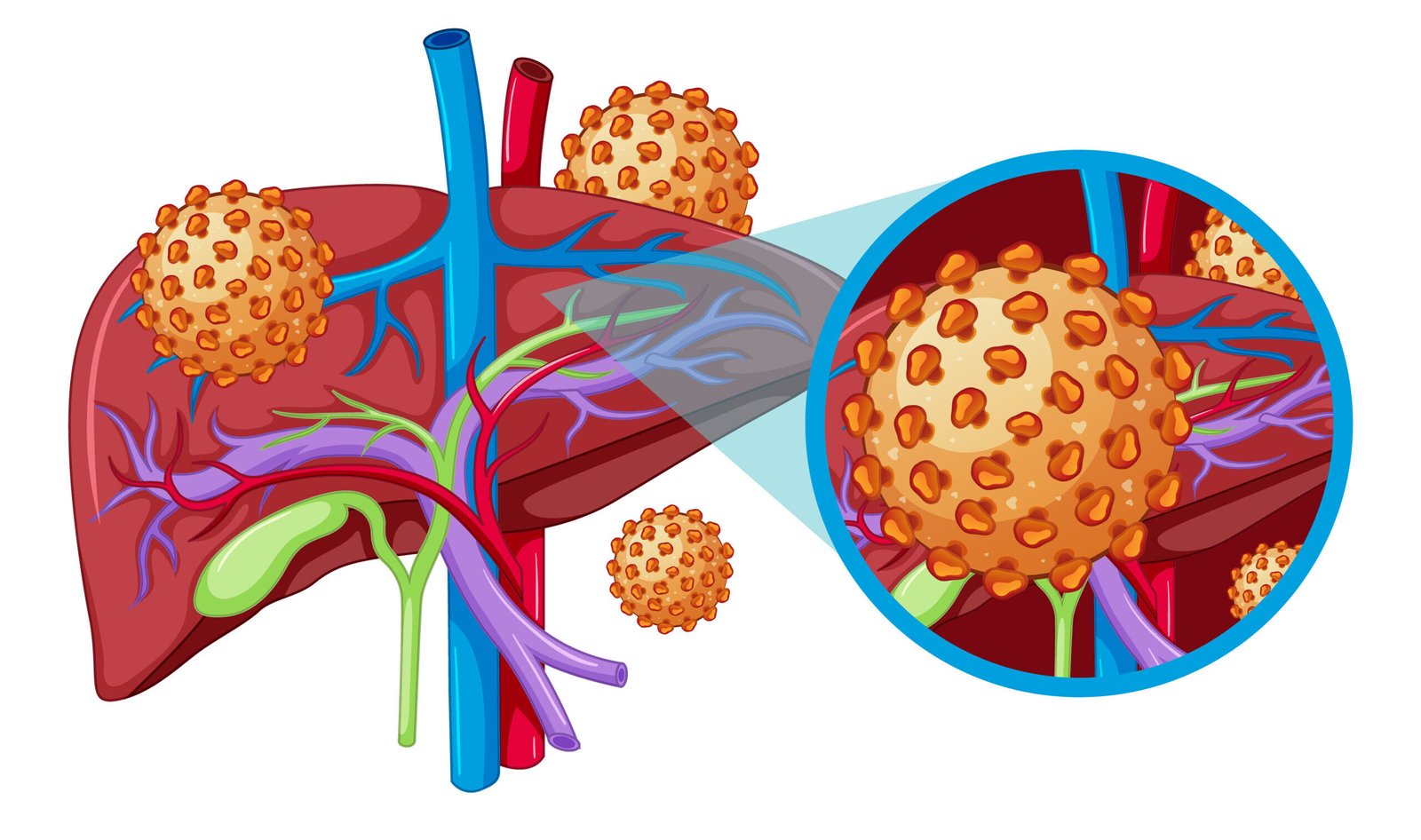All About Viscerotropic – Basic microbiology, parasitology, and immunology; nature, reproduction, growth, and transmission of common microorganisms and parasites in Bangladesh; prevention including universal precaution and immunization, control, sterilization, and disinfection; and specimen collections and examination. Students will have an understanding of common organisms and parasites caused human diseases and acquire knowledge about the prevention and control of those organisms.
All About Viscerotropic
Infectious Hepatitis
Hepatitis is an inflammation of the liver. The condition can be self-limiting or can progress to fibrosis (scarring), cirrhosis or liver cancer. Hepatitis viruses are the most common cause of hepatitis in the world but other infections, toxic substances (e.g. alcohol, certain drugs), and autoimmune diseases can also cause hepatitis.
There are 5 main hepatitis viruses, referred to as types A, B, C, D and E. These 5 types are of greatest concern because of the burden of illness and death they cause and the potential for outbreaks and epidemic spread. In particular, types B and C lead to chronic disease in hundreds of millions of people and, together, are the most common cause of liver cirrhosis and cancer. Hepatitis A and E are typically caused by ingestion of contaminated food or water.
Hepatitis B, C and D usually occur as a result of parenteral contact with infected body fluids. Common modes of transmission for these viruses include receipt of contaminated blood or blood products, invasive medical procedures using contaminated equipment and for hepatitis B transmission from mother to baby at birth, from family member to child, and also by sexual contact.

Definition of Hepatitis:
According to World Health Organization (WHO):
Hepatitis is an inflammation of the liver. The condition can be self-limiting or can progress to fibrosis (scarring), cirrhosis or liver cancer.
or
Inflammation of the liver which result in damage to hepatocytes with a subsequent cell death.
Classification of Hepatitis:
A. According to duration:
a) Acute hepatitis
b) Chronic hepatitis
B. According to etiology:
a) Viral infection:
- Hepatitis A virus (HAB)
- Hepatitis B virus (HBV)
- Hepatitis C virus (HCV)
- Hepatitis D virus (HDV)
- Hepatitis E virus (HEV)
- Herpes simplex virus (HDV)
- Cytomegalo Virus (CMV)
- Epstein Barr virus (EBV)
- Yellow fever virus
b) Auto immune disorder: toxins alcohol drug
c) Miscellaneous: Wilson’s disease
Preventive and Controlling Measures of HAV and HEV:
1. Proper sanitation:
- Improving water supply
- Proper excreta disposal
- Maintenance of hygiene (personal and environmental)
- Sanitary improvements of food stores and kitchen
2. Health education about:
- Use of safe drinking water and sanitary latrine
- Proper disposal of excreta
- Food handlers should be educated in matters of food hygiene
- Adequate breast feeding and improved weaning practices
3. Fly control: Controlling breeding of flies in association with faeces and dirty water
4. Timely control of epidemics: By strengthening of epidemiological surveillance systems.
5. Vaccination: Vaccine for hepatitis A is available but not for hepatitis E
6. Screening of blood donors for hepatitis A

Preventive and Controlling Measures of Hepatitis B, C, D:
1. Avoid risk factors
- Shared needles
- Homosexuality and illiegimate heterosexuality
- Prostitute
- Professional blood donors
- Carriers: They should not share razors and tooth brushes, Use barrier methods of contraception and should not donate blood
2. Screening of blood donors and encouraging voluntary blood donation
3. Standard safety precautions in hospitals and other health care settings: To avid accidental needle puncture and contact with infected body fluids.
4. Active immunization: HBV vaccine
5. Passive immunization: By hepatitis immunoglobulin for immediate protection to acutely exposed HBs Ag positive blood, preferably within 6 hours
- Surgeons, nurses and laboratory workers
- Newborn infants of carrier mothers
- Sexual contacts of acute hepatitis B patients
6. Passive active immunization
Hepatitis A and E
Definition of Hepatitis A:
Hepatitis A is an acute infectious disease caused by hepatitis HAV.
A) Agent’s factors:
- Agent: Causative agent is hepatitis A virus
- Resistance: The virus is resistance to heat and chemical
- Reservoir of infection: Human cases only
- Period of infectivity: 2 weeks before and 1 week after the onset of jaundice.
- Infective materials: Human faeces, Blood, Serum and body fluids.
B) Host factors:
- Age: All age groups can be affected. More frequent among children than adult.
- Sex: Both sexes can be equally affected
C) Mode of transmission:
- Faeco oral route
- Parenteral route (through blood or contaminated by needle)
- Sexual route
D) Incubation period: 2-6 weeks
E) Sign and symptoms: Symptoms may be mild or even no symptoms, but the person faeces are still infectious to others. The usual features are:
- A short, mild, flu-like illness: Fever, chills, malaise and fatigue
- Nausea, vomiting and diarrhea
- Loss of appetite
- Weight loss
- Dark urine and jaundice
- Itchy skin
- Abdominal pain
F) Investigation:
- Anti HAV
- Serum bilirubin
- SGPT and SGOT
G) Treatment: There is no specific treatment for HAV. The disease is self limiting and returns to normal within a couple of months. Only severely affected patients need hospitalization.
General plan of treatment are –
1. Bed rest
2. Diet
- Protein restricted and no spicy foods
- Light diet supplemented by fruits, plenty of fluids, ORS, dab water and glucose drinks.
3. If severe vomiting: IV fluid and anti-emetic
4. Drugs: Sedatives, hypnotics, and diuretics, are usually avoided. It diuretics are to be used potassium sparing diuretics should be used
5. Clinical and biochemical follow up

Hepatitis E
Definition: Hepatitis E is the viral hepatitis caused by hepatitis E virus
Epidemiology: Hepatitis E should be suspected in outbreaks of waterborne hepatitis occurring in developing countries like Bangladesh, especially if the disease is more severe in pregnant women.
Incidence and risk factors: Symptomatic HEV infections is most common in young adults
Incubation period: 3-8 weeks
Mode of transmission: Faeco oral and water borne
Signs and symptoms: May be asymptomatic or mild illness without jaundice that goes undiagnosed, particularly in children, typical sign and symptoms are –
- Jaundice
- Loss of appetite
- An enlarged, tender liver
- Abdominal pain and tenderness
- Nausea and vomiting
- Fever
Investigation:
- Anti HAV
- Serum bilirubin
- SGPT and SGOT
Treatment: There is no specific treatment for HAV. The disease is self limiting and returns to normal within a couple of months. Only severely affected patients need hospitalization. General plan of treatment are –
1. Bed rest
2. Diet
- Protein restricted and no spicy foods
- Light diet supplemented by fruits, plenty of fluids, ORS, dab water and glucose drinks
3. If severe vomiting: IV fluid and anti-emetic
4. Drugs: Sedatives, hypnotics, and diuretics, are usually avoided. It diuretics are to be used potassium sparing diuretics should be used
5. Clinical and biochemical follow up

Preventive and Controlling Measures of HAV and HEV:
A. Proper sanitation:
- Improving water supply
- Proper excreta disposal
- Maintenance of hygiene (personal and environmental)
- Sanitary improvements of food stores and kitchen
- B. Health education about:
- Use of safe drinking water and sanitary latrine
- Proper disposal of excreta
- Food handlers should be educated in matters of food hygiene
- Adequate breast feeding and improved weaning practices
C. Fly control: Controlling breeding of flies in association with faeces and dirty water.
D. Timely control of epidemics: By strengthening of epidemiological surveillance systems.
E. Vaccination: Vaccine for hepatitis A is available but not for hepatitis E
F. Screening of blood donors for hepatitis A
Hepatitis-B
Mode of Transmission of Hepatitis B Virus:
A. Parenteral transmission:
a) Infected unscreened blood and blood products.
b) Tattoos/acupuncture needles
c) A mode of spread most common among parenteral drug miss-users who share needles or other injecting paraphernalia,
d) Contaminated syringes and surgical instruments
B. Sexual route:
a) Close personal contact seems necessary for transmission
b) Sexual intercourse especially in male homo sexual and heterosexuals is an important route of transmission of infection.
C. Perinatal or Vertical transmission:
a) Before birth has not been documented
b) During birth has not been documented.
c) During birth, most of the transmission occur, when placenta is separated, leakage of blood infect the baby.
d) Infection occur After birth, during HBV contaminated with breast milk
D. Close living quarters or playground play as a toddler.
Management a Patient Affected by Hepatitis B Virus Infection
Clinical features:
A. Symptoms:
- Headache
- Myalgiam
- Arthralgia
- Yellow coloration of eye and skin
- Dark urine and pale stool
- Nausea and anorexia
Complication of Hepatitis B Virus Infection:
- Full recovery in 90-95% of adults/resolution (fate)
- Acute hepatic failure.
- Relapsing hepatitis: Biochemical, Clinical
- Cholestatic hepatitis.
- Post hepatitis syndrome
- Hyperbilirubinamia.
- Aplastic anaemia
- connective tissue disease
- Renal failure
- Henoch schonlein purpura
- Papular acrodermatitis
- Chronic hepatitis
- Cirrhosis (hepatitis B, C)
- Hepato cellular carcinoma
Preventive and Controlling Measures of Hepatitis B:
A. Avoid risk factors
- Shared needles
- Homosexuality and illiegimate heterosexuality
- Prostitute
- Professional blood donors
- Carriers: They should not share razors and tooth brushes, Use barrier methods of contraception and should not donate blood
B. Screening of blood donors and encouraging voluntary blood donation
C. Standard safety precautions in hospitals and other health care settings: To avid accidental” needle puncture and contact with infected body fluids.
D. Active immunization: HBV vaccine
E. Passive immunization: By hepatitis immunoglobulin for immediate protection to acutely exposed HBs Ag positive blood, preferably within 6 hours
- Surgeons, nurses and laboratory workers
- Newborn infants of carrier mothers
- Sexual contacts of acute hepatitis B patients
F. Passive active immunization
Read More….
